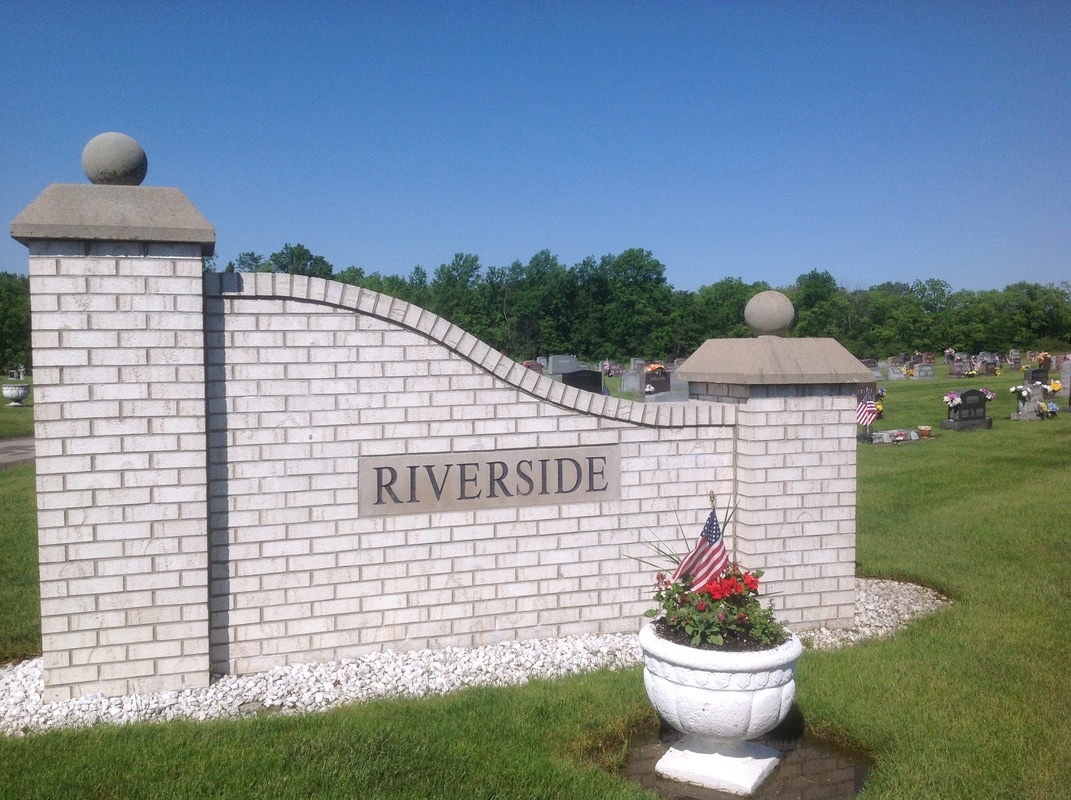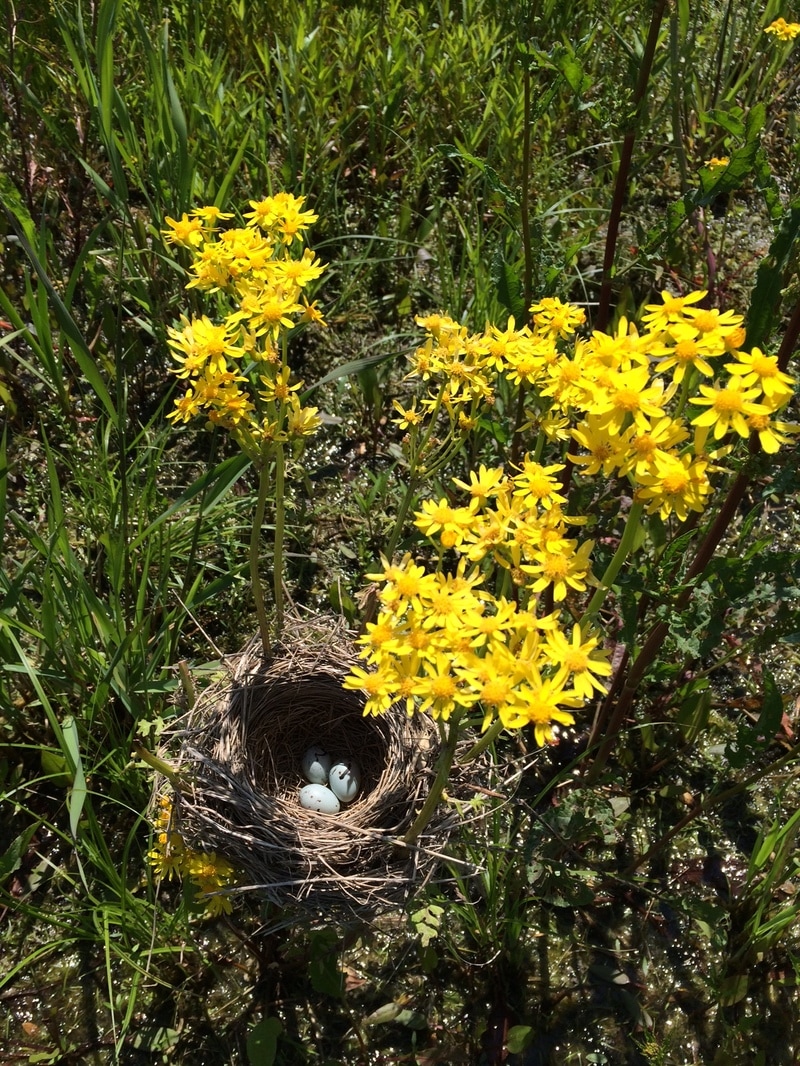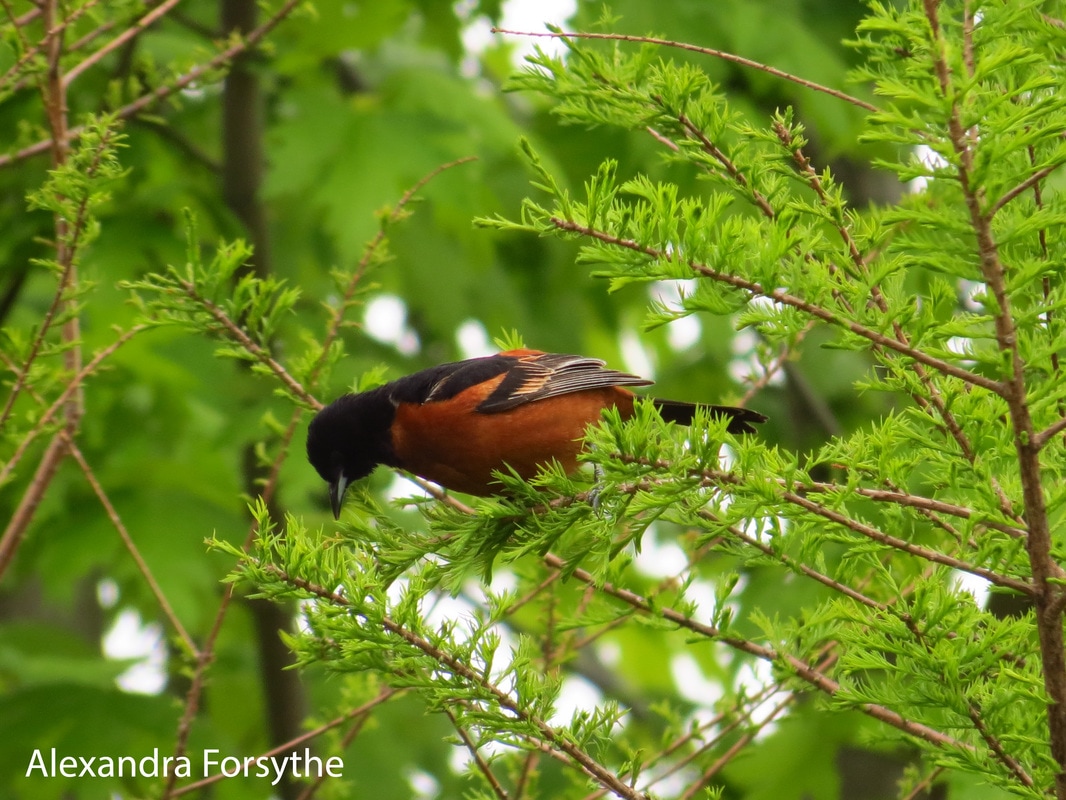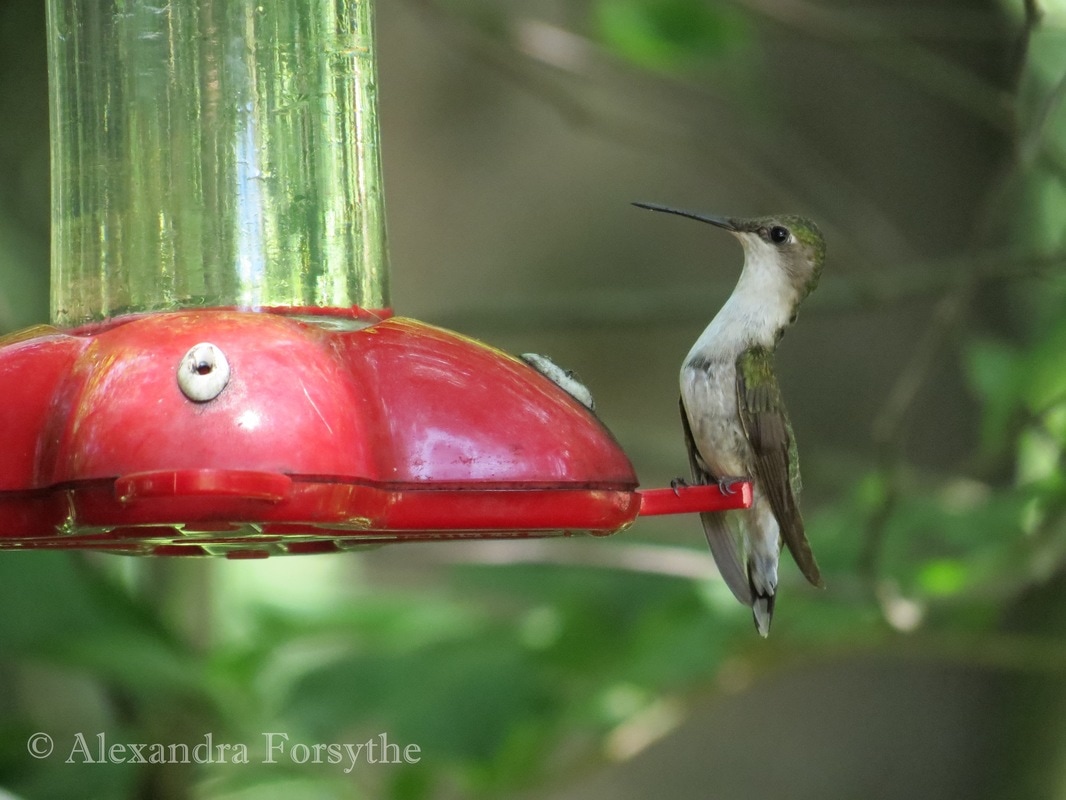Gene wrote about her friends at the Riverside Cemetery in "Tales You Won't Believe" which was published after her death. "The field lay in Limberlost territory, east of the village [Geneva] where I lived and worked for 15 years. It was bordered on one side by a flowing road running east and west and fairly well encircled east, south and west in the arms of a loving curve of the Wabash River.....Proof that I do not overrate the sheer beauty, the charm of this city of long sleep. Among those who lie beside the winding roadway, cradled by the arms of the river, daily visited by the birds descended from those worked among, rest many who were my best friends."
|
Gene Stratton-Porter made many good friends in Geneva. She wrote about several of them in her non-fiction books and magazine articles and had composite characters based on others in her fiction books. Gene was especially fond of the area around the Riverside Cemetery and those that helped her in her bird studies. Several allowed Gene access to their yards and farms and even told her about nests they thought she would want to photograph. Others would bring her a cool drink and food when she spent the day doing her field work. Some of her best bird photography was conducted here.
Gene wrote about her friends at the Riverside Cemetery in "Tales You Won't Believe" which was published after her death. "The field lay in Limberlost territory, east of the village [Geneva] where I lived and worked for 15 years. It was bordered on one side by a flowing road running east and west and fairly well encircled east, south and west in the arms of a loving curve of the Wabash River.....Proof that I do not overrate the sheer beauty, the charm of this city of long sleep. Among those who lie beside the winding roadway, cradled by the arms of the river, daily visited by the birds descended from those worked among, rest many who were my best friends." Editor's Note: Gene Stratton-Porter was a prolific writer and wrote a number of magazine articles. This is a small portion of an article that Gene wrote in 1901 on her bird studies in Geneva for Outing magazine. Several of her photographs on bird nests accompanied her words.
Bird architecture utilizes every conceivable material from the few chips on the ground of the killdeer, to the elaborate swinging nest of lint, lichens and hair of the oriole; every shape from the hummingbird's cup to the mud scoop of the swallow or the pensile purse of the vireo; and every location ranging from six feet under, and on the ground, over bushes, fences, shrubs, buildings, trees up to the highest towers, monuments and mountain crags. ........Bird architecture is one of the most interesting branches of natural history study and its surprises in the way of location, material and construction are never ending. The delight of discovering these things for yourself is enhanced by every treat for the eye and ear that nature has in store for her children; lapping water, waving grain fields, delicately colored and perfumed flowers and pungent forest odors. For every day spent exploring the secrets of Mother Nature she pays you compound interest. Not only is your mind filled with her signs, wonders and mysteries but your lungs expand with pure air, your blood washes free with delightful exercise and your heart beats in closer touch with the Creator. By Jane Brooks Hine
I went to the door one spring morning and there on the flowering currant bush was an Orchard Oriole taking his breakfast from the blossoms. Then, one day in summer, the Golden Robin flew past me like a streak of gold. Those were our first Orioles. It was the year of 1888. I saw a dance performed by two male Orchard Orioles. Within an angle of our house are two large flowering currant bushes that stand close together like a hedge, and just beyond is the grape arbor. As nearly as they could the birds kept about a foot apart and hopped from twig to twig as if keeping time to music. They danced side by side through and through the bushes, then went dancing down the vines of the arbor. I was invited to see a bird’s nest. It proved to be an Orchard Oriole’s and was as unique as the dance. A cup rested on a limb of a small young apple tree and was held in place by three woven chains made fast to a limb about ten inches above it. For several years all the nests of the Baltimore Oriole that I found, and many that my friends brought and sent to me, were made of a wild flax. At first they looked like flax when wound on the distaff. After while, now and then, there were no more flaxen nests. I have a beautiful nest that is woven entirely of black horse hair except one thread of coarse black twine that embroiders it. Every spring I scatter threads of twine and hang out skeins in trees. It is surprising how much twine the birds will take if it is provided for them. Editor’s Note: Jane Brooks Hine (1831-1916) was a Bird Woman a generation before Gene Stratton-Porter. Her writing on the Orioles was in one of her birding journals. It was also part of her writings in the 1911 Indiana Biennial Report. Editor’s Note: Jane Brooks Hine (1831-1916) was a woman who was a generation older than Gene Stratton-Porter. She noted the birds on her farm in DeKalb County and kept birding journals for birds she saw in DeKalb, Noble and Steuben Counties. We hope you enjoy Jane’s article on the Ruby-throated hummingbird. Her experience is timeless. This is from Terri Gorney’s research on Jane.
By Jane Brooks Hine One 27th of May my son discovered a Hummingbird at work upon her nest, and drew for me a map of the locality by which I had no difficulty in finding the spot. It was well in the depths of an eighty acre forest. I watched my opportunity and while the bird was away for material succeeded in obtaining a desirable seat for observation. The saddle was already formed and the nest evened up to a platform level with the upper surface of the limb. It was placed beyond the middle of the long, slender maple branch about fifteen feet above the ground. The bird always followed the same direction whenever she went for material. Oftener than otherwise she returned laden to her nest in thirty-nine seconds after she left it –now and then more; once ninety seconds. I also spent much time there the 28th and 29th, and find the history of those days very similar to that of the 27th. Occasionally she took a vacation for food and rest; but those vacations were short. On May 30, at two P.M., the cup was complete and the bird was carrying silk and lining it. For this material she would be gone about as long again as for that of the outside. The next day, May 31, she was sitting. During incubation she sat lightly on her nest a few minutes, then off as many, and looked brightly about her while on her eggs. On June 8 I found my bird in trouble; another female Hummingbird was trespassing. The aggressor would hover over the nest, swoop back and forth above it like a pendulum, alight with a tantalizing gesture on a twig close beside it, or with a squeal, dart under it, and each time she came near would get driven away by the sitting bird. Twice I saw her rob the nest, once of lichens from the outside and once a good bill-full of silk from the lining. The poor mother came back to her eggs as often as she was disturbed. After watching the constant conflict for more than two hours, I left them still battling. The next day the nest was unoccupied. During all these thirteen days –I had spent much time in close observation—I did not once see a male Hummingbird in the vicinity of the nest. It was the female who did all the labor of nest-making and of incubation and who as long as she could, valiantly defended her eggs and property. In my chosen seat I was not more than twenty feet from the nest and entirely unhidden; yet the bird paid no more attention to me than she might had I been a part of t he tree I very quietly leaned against. I once saw a female Hummingbird gather lichens from the body of a beech tree. She held herself poised before it, darting upon it again and again, until she was in her bill all she wished to carry. About nine o’clock one spring morning, when lilacs were in bloom, we discovered that the old lilac bush by the well was ‘swarming’ with Hummingbirds –just come; we knew they were not there a few minutes before. There are five large lilacs on our premises and those of a near neighbor. On investigation I found four of these bushes alive, as it were, with Hummers—all females. The fifth bush, a Persian, they did not favor. The Persian lilac, with its slender, lithe branches and great, drooping cluster, is very beautiful when in bloom, but its flowers lack the sweetness of the common species. Then, all the time, there were birds in the air constantly coming and going from bush to bush. They remained the greater part of the day. I spent much time standing within on of those bushes. The birds seemed not in the least disturbed by my presence. There were seldom less than ten and often fifteen of them about the particular bush I was occupying. Every now and then one would alight and sometimes would pass her long tongue back and forth through her bill to free it from pollen. In the afternoon a male Hummingbird occasionally came to the flowers but was invariable driven away by the females. Towards evening the flock, apparently undiminished in numbers, disappeared as abruptly as it had appeared in the morning. On the following day the Persian lilac was still in its native purple, but the beauty was gone from the other four bushes; the flowers were a dull copperas color. Once again I fell in with a wave of migrating Hummingbirds. These were in the eighty-acre forest and this time all males. These were not in a close flock as before, but were very plentifully spiced throughout the forest. In a neighbor’s orchard a Hummingbird sucked juice from an apple while a young girl was in the act of paring it. Once, on one of my rambles, I stopped to talk with a friend in her garden. A stalk of double velvet marigold, broken over the day before, drooped upon the ground. I suppose decay had set in, yet, as the flowers were still tolerably bright, I carried them with me when I resumed by walk. While pausing at a cornfield a Hummingbird, leaving the corn blossoms, came and leisurely fed from the marigolds in my hand, inserting its bill between the outer petals of the flowers. I (and others also, no doubt) have found it a very common thing for Hummingbirds to be hovering and apparently feeding in the vicinity of dead branches—branches checking in the summer sun. Are they not feeding upon something attracted by decaying limbs,--insects invisible to our eyes? ---Jane L. Hine, Sedan, Ind. Source: Auk, v. 11, no. 3, July-September 1894, p. 253-254 Notes and News Mrs. Jane Louisa Hine, an Associate of the American Ornithologists’ Union, died in Sedan, Indiana, February 11, 1916, in her eighty-fifth year. She was the daughter of Lonson Brooks, and was born in Erie County, Ohio, April 2, 1831. After attending public schools in her native county she finished her education at Oberlin College. Early in life she became interested in birds and continued to study them as long as she lived. She wrote much on birds for ‘The Farmer’s Guide,’ Huntington, Ind., and many of her notes are published in Butler’s ‘The Birds of Indiana.’ Her ‘Observations on the Ruby-throated Hummingbird’ is printed in ‘The Auk’ (1894, pp. 253-254). – J.H.S. Source: Auk, v. 34, 1917, p. 117 |
AuthorThe volunteers and staff of Limberlost Categories |




 RSS Feed
RSS Feed
